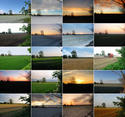“Man is the only kind of varmint who sets his own trap, baits it, then steps in it.” — John Steinbeck
Though probably not intended as a political commentary, Steinbeck’s utterance perfectly describes the current California budget crisis. And, given the revenue and service delivery relationship between cities and the state, traps can be set and baited in Sacramento, leaving mayors, city councils and city managers to step in them. read more »






















